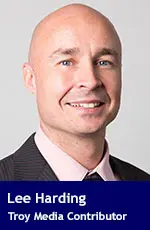 Who is the greatest champion in the history of Indianapolis?
Who is the greatest champion in the history of Indianapolis?
Most would say Peyton Manning, the superstar quarterback who led the National Football League’s Colts to Super Bowl victory.
Hockey buffs might offer Wayne Gretzky, who played his first eight games of pro hockey in the Indiana capital for the Indianapolis Racers.
Speaking of racers, A.J. Foyt, Al Unser, Sr., and Rick Mears each won the Indianapolis 500 four times.
But none of these people did as much for Indianapolis as its greatest mayor, Stephen Goldsmith. His transformation of the city is a lesson for city administrations everywhere.
Indianapolis had been in a long slump before Goldsmith took the reins on New Year’s Day 1992. Its population had dropped by 15,000 since 1970, as the city’s mainstay of manufacturing was in decline. Meanwhile, the government sector burgeoned. In the 1980s, property tax rates had grown 25 percent and county income tax rates had increased by 350 percent.
Goldsmith took nine volunteers, mostly from the business community, to form SELTIC: the Service, Efficiency, and Lower Taxes for Indianapolis Commission. The commission adopted best practices from other communities and benchmarked themselves against other cities and suburbs.
Monopolies of all kinds, including those enacted by unionized government employees, impede the quality of service and eliminate any incentive for innovation.
SELTIC put 75 city services out for private sector tender. The management team spared the city from riots from unions due to their approach. City workers were encouraged to bid on contracts and were even given help by the city in filling out the bid requirements.
Sometimes city workers won the contract but even when they didn’t, the city required the winning private sector bidder to absorb the city’s unionized workers. During Goldsmith’s eight years in office, not a single unionized employee lost his or her job. The city also insisted that comparable pay and benefits be maintained. Many workers also received incentive bonuses now possible because of new bosses and governance policies.
After the city crew won the contract to keep repairing potholes, it did a better job than ever. The prospect of competition forced them to innovate with their patching equipment. This shrunk their crew from two trucks and eight workers to one truck and five workers. Pothole repair costs dropped from $425 per ton to $307, while productivity rose from 3.1 to 5.2 lane miles per day. That’s 68 percent more efficiency at a 25 percent lower cost.
During Goldsmith’s eight years as mayor, the city saved $480 million, compared to what spending would have been, based on the average increase of the previous 12 years. Indianapolis reduced its employee workforce from 4,650 to 3,400, even while the city grew by 50,000 residents; that ratio of residents to employees had been nearly tops in the country.
Property taxes were cut four times. The city’s credit rating rose to AAA. Per capita income increased by 25 percent and unemployment dropped from 5.2 to 2.3 percent.
The results were so impressive that by the late 1990s, more than 3,500 mayors, governors and councillors visited the city to see what they could learn. Many took the lessons home. Green Bay, for example, privatized its transit system, improving its service while saving seven percent annually. Phoenix and Charlotte put their garbage collection out for competitive bids, as did Buffalo its recycling. Dallas put its vehicle fleet maintenance out for bids, as did Cincinnati with its facilities maintenance.
In 2005, the management style spread to Canada and Winnipeg contracted out its garbage collection, saving the city $2.6 million annually and reducing complaints by one-quarter. In 2012, Toronto Mayor Rob Ford contracted out garbage collection in the western half of the city, a move that saved the city $11 million annually.
Today, Goldsmith is a professor at Harvard University, where he directs the Innovations in Government Program. The author of nine books still has a lot to teach.
Indianapolis’s greatest champion can help every city become a winner. Shouldn’t more Canadian cities be looking at the Goldsmith revolution?
Lee Harding is research associate for the Frontier Centre for Public Policy.
The views, opinions and positions expressed by columnists and contributors are the author’s alone. They do not inherently or expressly reflect the views, opinions and/or positions of our publication.


